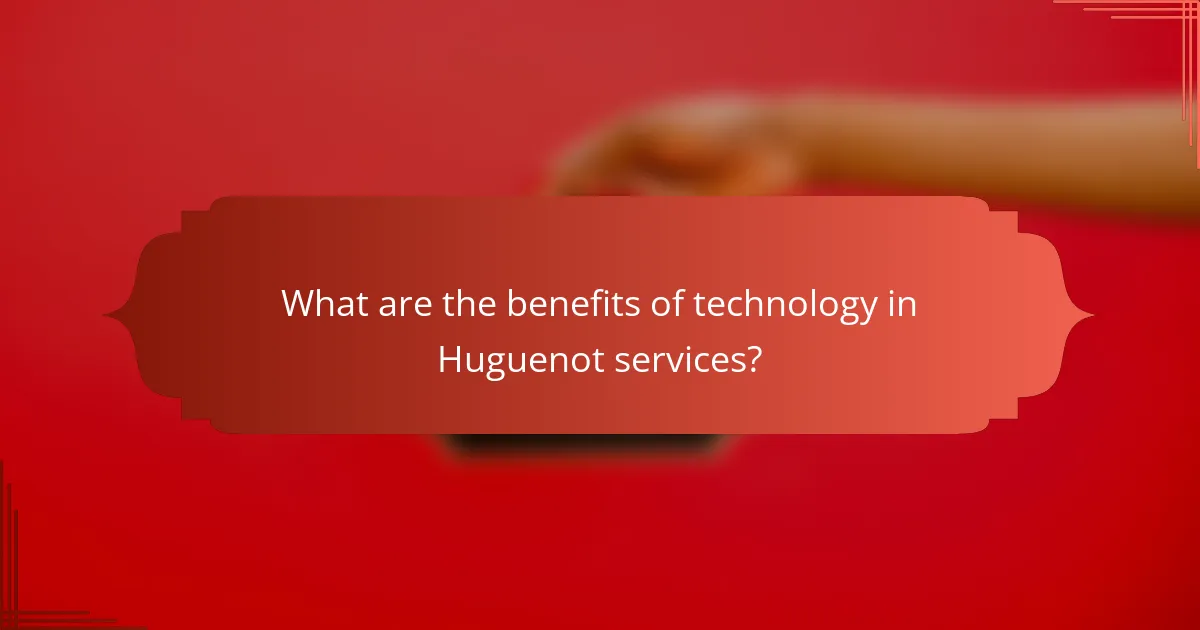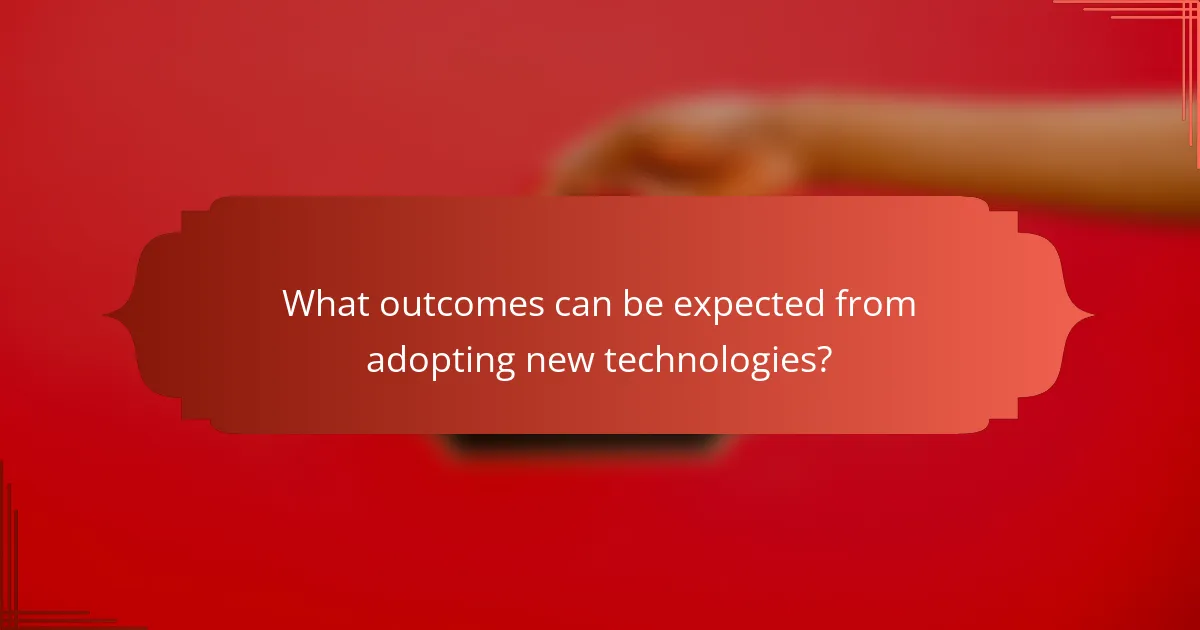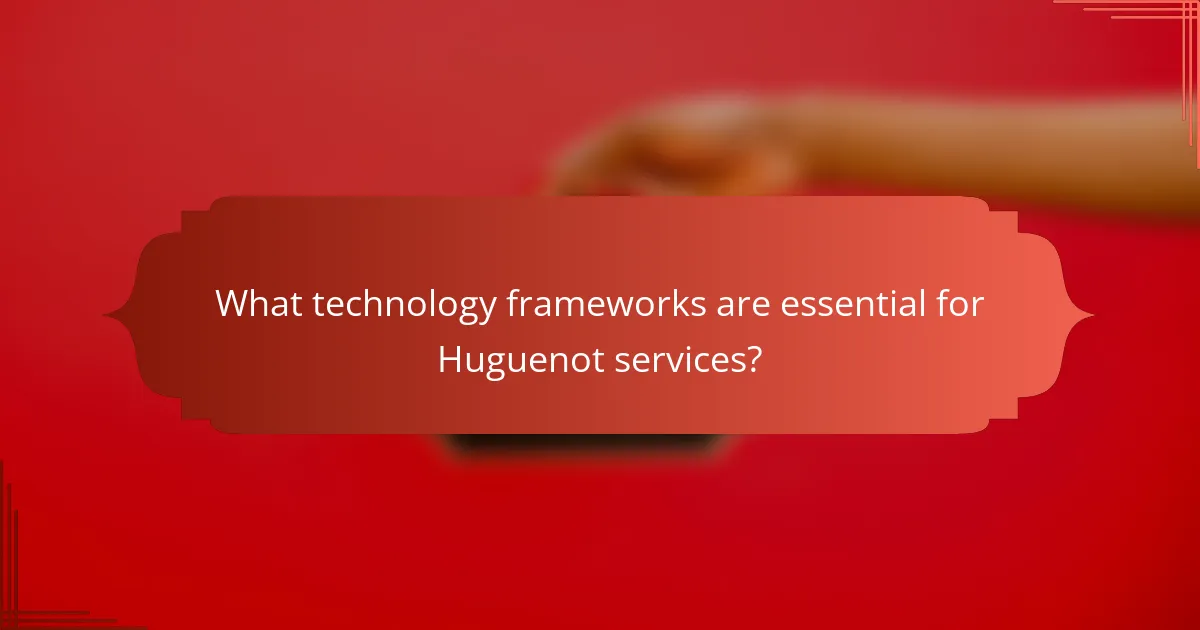Technology is revolutionizing Huguenot services in Ireland by enhancing operational efficiency and client interactions. Innovations such as artificial intelligence and mobile applications are making service delivery more efficient and personalized, ultimately leading to improved client satisfaction and retention.

How is technology transforming Huguenot services in Ireland?
Technology is significantly enhancing Huguenot services in Ireland by streamlining operations and improving client interactions. Innovations such as artificial intelligence, mobile applications, and data analytics are reshaping how these services are delivered, making them more efficient and personalized.
Integration of AI for service efficiency
The integration of artificial intelligence (AI) in Huguenot services is driving efficiency by automating routine tasks and optimizing resource allocation. AI tools can analyze service requests and direct them to the appropriate personnel, reducing response times and improving overall service delivery.
For example, chatbots powered by AI can handle common inquiries, allowing staff to focus on more complex issues. This not only enhances client satisfaction but also lowers operational costs by minimizing the need for extensive human resources.
Use of mobile apps for client engagement
Mobile applications are transforming client engagement by providing easy access to Huguenot services. Clients can use these apps to schedule appointments, receive updates, and access resources from their smartphones, making interactions more convenient and efficient.
Additionally, features like push notifications keep clients informed about important events or changes in services, fostering a stronger connection between the organization and its clients. This direct line of communication can significantly enhance user experience and satisfaction.
Data analytics for personalized services
Data analytics enables Huguenot services to offer personalized experiences by analyzing client data and preferences. By understanding trends and behaviors, organizations can tailor their services to meet individual needs, enhancing client satisfaction and loyalty.
For instance, predictive analytics can identify which services are most relevant to specific client segments, allowing for targeted outreach and customized offerings. This strategic use of data not only improves service relevance but also helps in resource planning and allocation.

What are the benefits of technology in Huguenot services?
Technology in Huguenot services enhances operational efficiency, improves client experiences, and reduces costs. By integrating innovative tools, organizations can streamline processes, leading to faster service delivery and higher satisfaction rates.
Enhanced service delivery speed
Implementing technology in Huguenot services significantly accelerates service delivery. Automated systems can process requests in low tens of milliseconds, compared to manual methods that may take several minutes.
For example, online platforms allow clients to submit requests and receive responses almost instantly, eliminating delays associated with traditional communication methods. This speed not only enhances efficiency but also improves overall service quality.
Improved client satisfaction rates
Technology contributes to higher client satisfaction rates by providing more accessible and responsive services. Clients appreciate the convenience of online interactions and the ability to track their requests in real-time.
Surveys indicate that organizations utilizing technology often report satisfaction rates in the high 80s to low 90s percent range. This is largely due to the personalized experiences that technology can facilitate, such as tailored recommendations and timely updates.
Cost reduction through automation
Automation in Huguenot services leads to significant cost reductions by minimizing the need for manual labor. Organizations can save on labor costs, which can account for a substantial portion of operational expenses.
For instance, automating routine tasks can reduce processing times and free up staff to focus on more complex issues, ultimately improving productivity. Businesses often find that they can cut operational costs by tens of percent through effective automation strategies.

What outcomes can be expected from adopting new technologies?
Adopting new technologies can lead to significant improvements in service delivery and client satisfaction for Huguenot services. Key outcomes include enhanced client retention, increased operational transparency, and better resource allocation.
Increased client retention
New technologies can improve client retention by providing personalized services and timely communication. For example, implementing a customer relationship management (CRM) system allows organizations to track client interactions and preferences, leading to tailored experiences that foster loyalty.
Additionally, automated follow-ups and reminders can ensure clients feel valued and engaged, reducing the likelihood of them seeking services elsewhere. Organizations should regularly assess client feedback to refine their technology use and enhance retention strategies.
Higher operational transparency
Operational transparency is enhanced through the use of technology that allows stakeholders to access real-time data and insights. Tools like dashboards and reporting software can provide clear visibility into service performance, resource usage, and financial health.
By sharing this information with clients and staff, organizations can build trust and accountability. It is crucial to ensure that data is presented in an understandable format and that stakeholders are trained to interpret the information effectively.
Better resource allocation
Technology facilitates better resource allocation by providing data-driven insights into service demands and operational efficiencies. For instance, analytics tools can identify peak service times, allowing organizations to allocate staff and resources more effectively.
Moreover, adopting cloud-based solutions can optimize resource management by enabling flexible access to tools and data from anywhere. Organizations should regularly review their resource allocation strategies based on technology insights to maximize efficiency and minimize waste.

What technology frameworks are essential for Huguenot services?
Essential technology frameworks for Huguenot services include cloud computing and robust cybersecurity measures. These frameworks support efficient data management and protect sensitive client information, ensuring compliance with relevant regulations.
Cloud computing for data management
Cloud computing enables Huguenot services to store, manage, and analyze data efficiently. Utilizing cloud platforms allows for scalable resources, meaning organizations can adjust their storage and computing power based on demand without significant upfront investment.
When selecting a cloud provider, consider factors such as data accessibility, compliance with local regulations, and security features. Popular options include Amazon Web Services (AWS), Microsoft Azure, and Google Cloud, each offering various services tailored to different needs.
Cybersecurity measures for client data protection
Implementing strong cybersecurity measures is crucial for protecting client data in Huguenot services. This includes using encryption, multi-factor authentication, and regular security audits to identify vulnerabilities.
Organizations should also educate staff on cybersecurity best practices, such as recognizing phishing attempts and maintaining secure passwords. Regularly updating software and systems can help mitigate risks associated with cyber threats.

How to choose the right technology for Huguenot services?
Choosing the right technology for Huguenot services involves understanding client needs, ensuring compatibility with existing systems, and staying within budget constraints. A thoughtful approach can enhance service delivery and client satisfaction.
Assessing client needs and expectations
Start by gathering detailed information about client needs and expectations. Conduct surveys or interviews to understand their preferences, pain points, and desired outcomes from the services provided.
Consider creating user personas that represent different client types. This can help in tailoring technology solutions that meet diverse needs effectively.
Evaluating technology compatibility
Assess how new technology will integrate with existing systems. Compatibility issues can lead to increased costs and operational disruptions, so it’s crucial to evaluate software and hardware requirements beforehand.
Look for solutions that offer APIs or integration capabilities with current platforms. This can streamline processes and reduce the need for extensive retraining of staff.
Considering budget constraints
Establish a clear budget for technology investments, factoring in both initial costs and ongoing maintenance expenses. This will help prioritize features that align with client needs while remaining financially viable.
Consider options like cloud-based services that often require lower upfront investments and provide scalability. Always compare potential ROI against the total cost of ownership to make informed decisions.
